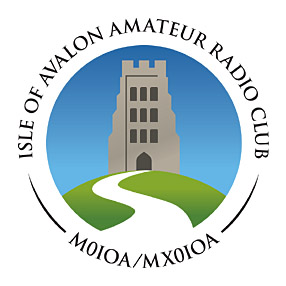Programming the Anytone AT778UV using CHIRP
At the club last night I programmed John G8VZA’s Anytone AT778UV(VOX) using the hand mic and the front panel. It was tough going - over a quarter of an hour to get a single repeater GB3WR into channel 01. I have the AT778UV which is the earlier model, the user interface is very similar, and pretty horrible. For those of you dedicated to manually programming the radio there’s a guide by the anytone groups.io reproduced by Simon the wizard. It’s pretty grim, but if that is your thing have at it.
When I bought this rig in 2019 there was a program from Anytone to set up the radio memories, but a PC move means I lost that, and I can’t find anything on Anytone’s website that works. So I was looking at manual programming if I wanted to change anything - at the time I bought it this rig wasn’t supported by CHIRP.
CHIRP now supports the Anytone AT778UV and its close sister the AT778UV(VOX) which John had.
When I first tried CHIRP version chirp-next-20240306 it didn’t work. I had to untick the Enable Automatic Edits box

like so

The it was fun and games with the cable, first I tried the cable provided with the rig.

In Device Manager I get to see this

Honestly, you couldn’t make it up. Somebody at Prolific took the time to write an update driver to shut off their PL2303TA devices - as they say, EOL by end of 2020. What sort of moronic behaviour is that - built in obsolescence with a twist.
In comparison, every single cable I have with an FTDI chip is still serviceable with Windows, as are cables using the Silicon Labs CP210X chipset. The solution is to beat on this usb cable end with a hammer so it never wastes any more of my limited time on earth and to go back to the solution I found in 2019 - a homebrew cable adapter for a bog-standard FTDI cable. FTDI cables are used for programming Arduino boards and I fitted an interface connector on veroboard to adapt the FTDI pinout to the connectors used by Chinese radios, with the exception of the Anytone they are all 3V3 TTL RX, TX, and GND presented in many different pinouts.
I salvaged the RJ45 and cable as this was better made with decent strain relief than my 2019 homebrew RJ45. I’ll swap it out and fit the Molex connector to the other end.

The transfer is quite slow, and it sometimes barfs about 1 in 20 times and you get to turn the rig on and off to start again, I do have some recollection I had to do this sometimes with the old program.
As always with CHIRP, take a download from the radio before doing anything, and save and label it as the default. Then take another copy of this default, and edit that. CHIRP has a tab with general radio settings, and you want a copy of what these all were at the get-go, else you may find yourself setting the memories OK but the radio general settings to something you may find disagreeable.

| Loc | Frequency | Name | Duplex | Offset | Tone Mode | Tone | Mode | Power |
|---|---|---|---|---|---|---|---|---|
| 20 | 145.600000 | GB3WR | - | 0.600000 | Tone | 94.8 | NFM | 5.0W |
| 21 | 433.300000 | GB3WB | + | 1.600000 | Tone | 94.8 | FM | 5.0W |
| 22 | 430.925000 | GB3FI | + | 7.600000 | Tone | 77.0 | FM | 5.0W |
The settings for some local repeaters in Chirp. I get into all of these running 5W into a vertical folded dipole in the loft.
